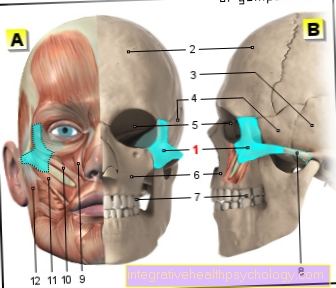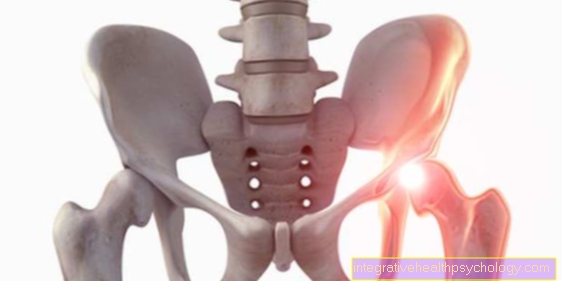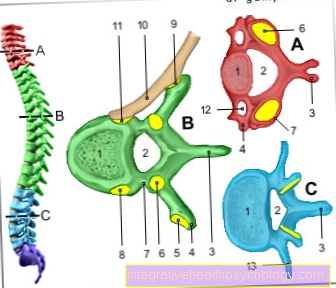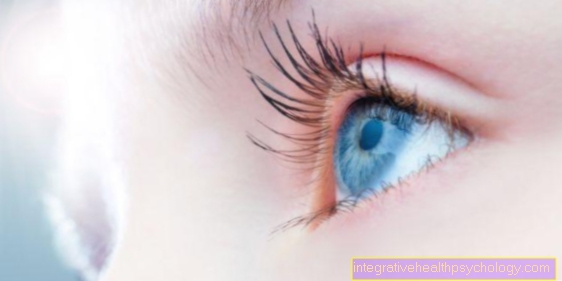Corneal edema in the eye
What is corneal edema?
Corneal edema is a collection of water in the cornea. This leads to an increase in the thickness of the cornea and swelling.
Corneal edema can be caused by various diseases, including Fuchs' endothelial dystrophy.
Symptoms include pain that makes blinking worse and the feeling of a foreign object in the eye.
Different treatment options are available depending on the cause of the corneal edema.

How to recognize corneal edema in the eye
What are the symptoms of corneal edema in the eye?
With corneal edema, symptoms of varying degrees of severity can occur depending on the severity of the symptoms.
One of the central symptoms is usually a sensitivity to light and glare, as the eye is in an increased state of irritation. This makes it react more intensely to various external stimuli. This is often accompanied by an eyelid cramp.
In addition, corneal edema is very often associated with severe pain. There are many nerve endings on the cornea, which means that the cornea is well supplied with nerves. When the cornea is irritated, this signal is picked up and passed on by a large number of nerves, which is why it usually leads to severe pain. These are usually made worse by blinking the eye, as this creates mechanical pressure on the already irritated and thickened cornea.
In addition, those affected often have the feeling that they have a foreign body in their eye, as the pathological water retention leads to an increase in the corneal mass.
In many cases, corneal edema also leads to a decrease in vision. The cornea is an important part of the eye for clear vision. Due to a swelling, this function can no longer be carried out and those affected have impaired vision.
How is corneal edema in the eye diagnosed?
The diagnosis of corneal edema is often made through clinical examination. Depending on the extent, the corneal edema can already be seen with the naked eye.
In many cases, additional diagnostic tools can help with the diagnosis. On the one hand, the intraocular pressure should be measured in the case of a causative glaucoma, for example. On the other hand, a more precise inspection of the cornea using a slit lamp, i.e. a special magnifying microscope, can be helpful.
Treating corneal edema in the eye
How is corneal edema treated in the eye?
So-called dehydrating eye drops can be used to treat corneal edema. This can be, for example, table salt in a certain concentration. The electrolytes in the eye drops cause the water to flow back behind the cornea, where, like the rest of the aqueous humor, it can be removed and returned to the circulation.
Acute corneal edema can damage the corneas with tears. In this case, a keratoplasty, i.e. a corneal transplant, may be necessary.
When treating corneal edema, treating the underlying cause is very important. For example, if the cornea is infected, it can be treated with antibiotic, antiviral or antifungal eye drops, i.e. against bacteria, viruses or fungi.
If the corneal edema occurs shortly after a cataract operation, an ophthalmologist should be consulted to investigate possible complications of the operation. In the case of an acute attack of glaucoma, this should be treated as quickly as possible, as the eye and thus the eyesight can be permanently damaged.
Which medications can help?
Various eye drops can help with corneal edema. These include, for example, so-called dehydrating eye drops. These ensure that the stored water flows out of the swollen tissue of the cornea. These eye drops are often used, for example, in an underlying Fuchs endothelial dystrophy.
In the case of acute pain, analgesic eye drops and medication should also be used. Unfortunately, the corneal edema is often so advanced that treatment with medication alone is not sufficient.
Will corneal edema develop in the eye after cataract surgery?
During cataract surgery, i.e. the use of a new lens when it becomes cloudy, corneal edema can occur in some cases after the operation.
The surgical treatment opens up various structures of the eye, including the cornea, and thereby irritates them. This can promote water retention in the tissue of the cornea. An additional risk factor is Fuchs endothelial dystrophy that already existed before the operation.
If you notice pain and swelling after cataract surgery, you should therefore consult an ophthalmologist as soon as possible.
Find out everything about the Cataracts.
Preventing corneal edema in the eye
What are the causes of corneal edema?
Corneal edema can have various causes. What they all have in common is an increased accumulation of water in the so-called stroma, i.e. the structure-giving tissue, the cornea. This worsens the transparency or permeability of the cornea.
Various irritations and damage to the cornea can lead to corneal edema.
This includes keratitis, the inflammation of the cornea, which is usually caused by bacteria such as staphylococci or streptococci. In rare cases, fungi such as Aspergillus or viruses such as Herpes simplex can also lead to corneal inflammation.
Acute glaucoma, i.e. an attack of glaucoma, can also lead to corneal edema. This leads to an excessive accumulation of aqueous humor in the anterior segment of the eye. This leads to an acute increase in intraocular pressure, which can cause water to accumulate in the cornea.
The so-called Fuchs endothelial dystrophy can also lead to corneal edema. A congenital disease of the lowest corneal layer (endothelium) leads to an increase in permeability, which means that water can increasingly collect in the corneal tissue.
A rare cause these days is incorrect use of contact lenses. If it is worn for too long, the cornea may be insufficiently supplied with oxygen (hypoxia), which promotes water retention.
Course of corneal edema in the eye
How long is the duration of corneal edema in the eye?
The duration of a corneal edema depends on the development and severity of the swelling.
In the case of an acute inflammation that leads to the rapid storage of water in the corneal tissue, rapid therapy must also be given. In this case, the corneal edema usually lasts from a few days to weeks.
However, if it is a chronic or degenerative disease, the duration can be weeks to months or even years. In the case of Fuchs endothelial dystrophy, for example, the water retention occurs due to a malfunction of a corneal layer, which increases in the course and is therefore a gradual process.
Further information
You might also be interested in these topics:
- Causes of cataracts
- Glaucoma symptoms
- Corneal dystrophy



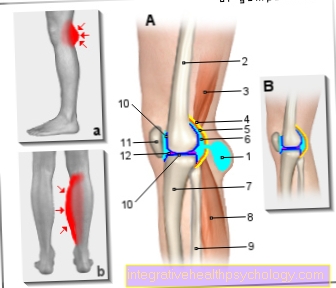



.jpg)
